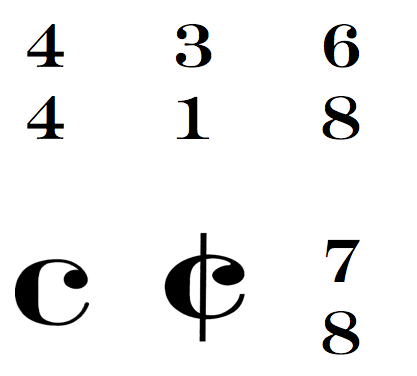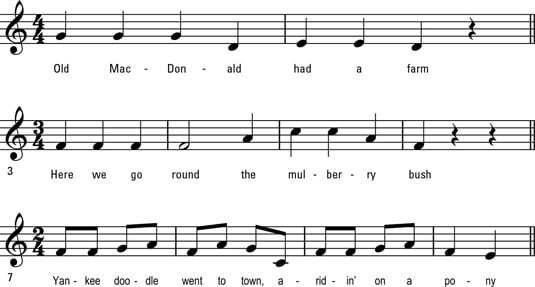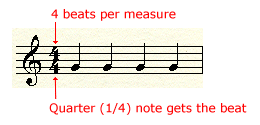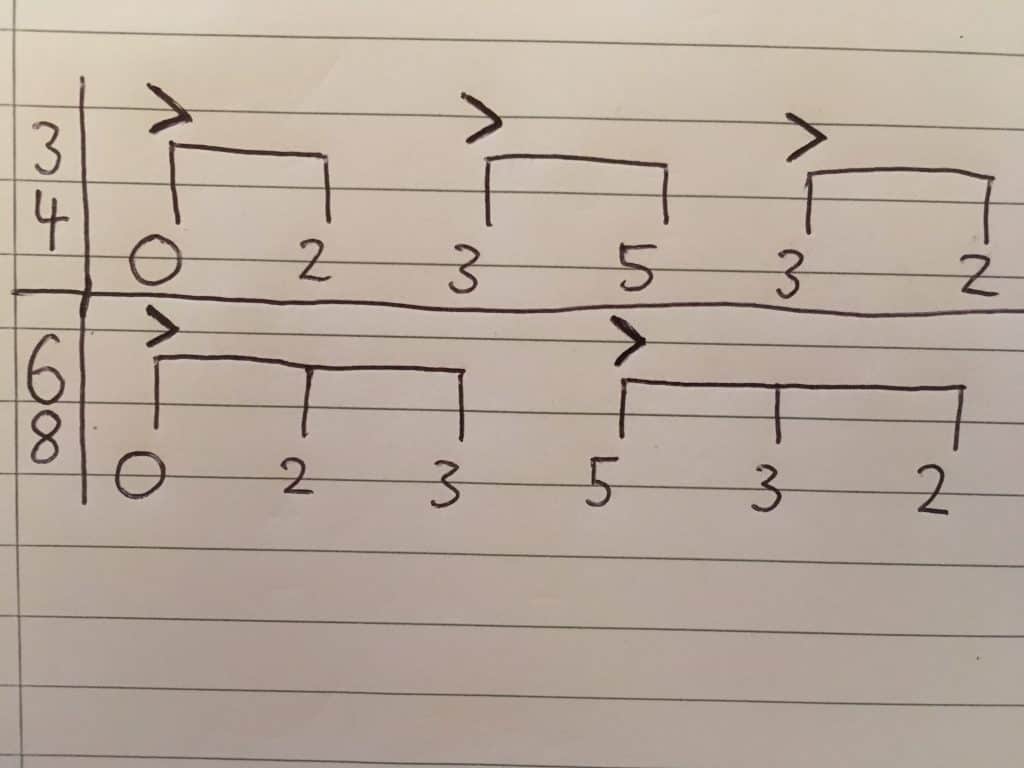Time Signature Chart 2 4 3 4 4 4

The number of notes allowed in each measure is determined by the time signature as you saw in the time signature examples above each time signature has two numbers.
Time signature chart 2 4 3 4 4 4. If you are a musician like me then you probably find 4 4 time easy to play and write as it is the most common time signature in music. Duple time means 2 main beats per bar. The time signature chart also shows you which are simple and compound time signatures. The bottom number of the time signature indicates a certain kind of note used to count.
A regular time signature is one which represents 2 3 or 4 main beats per bar. These are compound time signatures. In a sense all simple triple time signatures such as 3 8 3 4 3 2 etc and all compound duple times such as 6 8 6 16 and so on are equivalent. The most common meter in music is 4 4.
A 2 4 time signature contains two quarter notes within a measure. Reading the time signatures. A piece in 3 4 can be easily rewritten in 3 8 simply by halving the length of the notes. It s so common that its other name is common time and the two numbers in the time signature are often replaced by the letter c.
The examples i have are in 2 2 2 4 3 4 6 8 12 8 as well as odd signatures and polyrhythms. This time signature chart shows the most common regular time signatures. In 4 4 the stacked numbers tell you that each measure contains four quarter note beats. The weak beats fall on the subdivision or eighth note after beats one and two.
2 4 time 3 4 time 4 4 time 3 8 time 9 8 time 4 2 time 3 1 time and so on. What is common for 4 4 is to divide each beat into two eighth notes. In general music written in 2 4 time is performed more slowly than music written in 3 4 or 4 4 time. In 3 4 time it ll be one two three over and over again.
A top number and a bottom number. I m up to 120 song examples and growing. The 2 4 3 4 4 4 5 4 7 4 and 2 2 signatures are simple time signatures because each beat can be broken naturally in two equal parts and the unnatural thing would be to break each beat into three equal parts. But music is complex.
On a formal mathematical level the time signatures of e g 3 4 and 3 8 are interchangeable. Quadruple time means 4 main beats per bar. The most common simple time signatures you will see are 2 4 3 4 and 4 4 although any time signature with a 2 3 or 4 as the top number is classified as simple. In 2 4 time one two the top number isn t divisible by 3 except when it is for example 3 4 and 3 8 are considered simple time signatures whereas 6 4 6 8 and 9 16 aren t because they are divisible by 3.


















